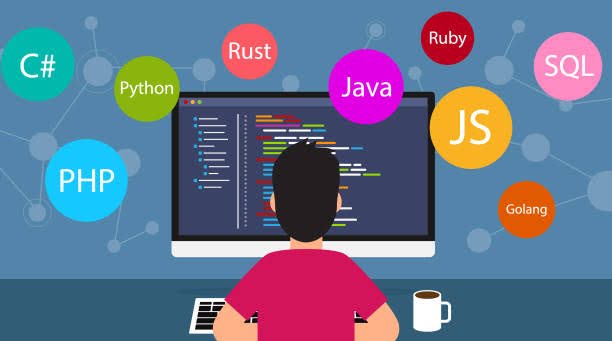The software development life cycle (SLDC) is the time span when the product is created and eventually released. Software design is one of the tricky processes that involves diverse stages. This blog is divided into two sections. The first one explores the necessary steps in thesoftware development process. The second section illustrates valuable insights into the culture and perks of software companies.�
Statistical Analysis of Software Development Market�
According to a 2021 research, the global software market is observed to have a value of over $200 billion. This rapid revenue increase is because of the coronavirus outbreak, which increase the audience and the need for software in the market. Because of this pandemic, Multiple users prefer getting all the facilities online. Additionally, Software development companies have made the digital presence more convenient for users. Now, they do not have to use banners and boards to market themselves because these advertising tasks are done through software development processes.�
Major Questions in Reader’s Mind
Section 1: What is SDLC? On which stages does it focus within the software development process?
Section 2: How are software companies saving fresh graduates from the grim realities of life?
Preliminary Analysis of Software Development Life Cycle (SDLC)
The software development life cycle is the process in which designers and developers work in a team to create innovative products. The developed software must be embedded with compelling features and completed with fewer expenses so that it can save individuals time. The primary objective behind the entire SDLC process is to reduce hazards regarding product launch processes. Moreover, it also guarantees that the software will align with client demands.�
AI Software Development Process: Listing the Top 6 Stages
AI software development process can include agile and iterative techniques. It might be unique for different development units and software. However, the stages are always similar; they are mentioned below in tabular form:
| Strategizing and Provision Phase | The first phase of the software development process begins with a strategizing technique in which all the essentials related to the product are decided.� |
| Concise Requirements Phase | In the next phase, the details collected during the planning process are changed into concise requirements for the development unit.� |
| Designing Phase | The third phase focuses on designing the set details into appropriate patterns. This process involves designing software systems, technical languages, formats, front-ends and backends, and safety measures.� |
| Development Phase | The fourth phase occurs when the development team converts the designs into modules. In this software development process, the preconditions and designs are transformed into codes that make the final product.� |
| Evaluation Phase | Before sending the product to the target audience, it is necessary to test it thoroughly. The evaluation phase steps in to debug the errors within the product and give the software a trial.� |
| Implementation Phase | During the sixth phase, i.e. implementation stage, development teams are fully satisfied with their software performance, and they launch the product in the market. |
| Maintenance Phase | The seventh and last phase of the software development process is the maintenance stage, during which the individuals can explore the bugs within the software that might have been missed during the earlier evaluation period.� |
Software Development Agency – A New Wave of Innovation
When the applicants are not provided with numerous opportunities at the start of their work lives, they must confront diverse challenges, including unemployment and poverty later on. Additionally, candidates don’t have the right paths that they canchoose after completing their technical degrees. However, after the advent of software, consumers have more possibilities to eliminate their inner fears.�
Benefits of Getting Hired in Software Houses
Software development jobs are great opportunities for young minds because they offer diverse benefits, including job safety, creative mindsets, increased salaries, and many more. These technical possibilities have transformed the lives of individuals who are just at the beginning of their careers.�
Applicants are offered flexible facilities after being hired into a software house. Remote jobs are a big perk for fresh graduates because they do not have to follow the 9 to 6 timings. It provides them with the leverage of working flexible hours. Learning innovative concepts daily is one of the most beneficial things individuals can receive from software development fields. Other professions do not support the candidates by providing them with something revolutionary every day, but computer science graduates are getting this perk. Therefore, youngsters must dive into these professions to better advance their futures.�
What’s Next?
The continuous transformation of technology, its increased requirement within the technical fields, rapid development techniques, emerging economies, and flexible workings, have made the future of software creation worth discovering for the audience. These transformations represent diverse possibilities for the future cyberspace, which will be reshaped by software developers.�
Visit diginfo for more!



